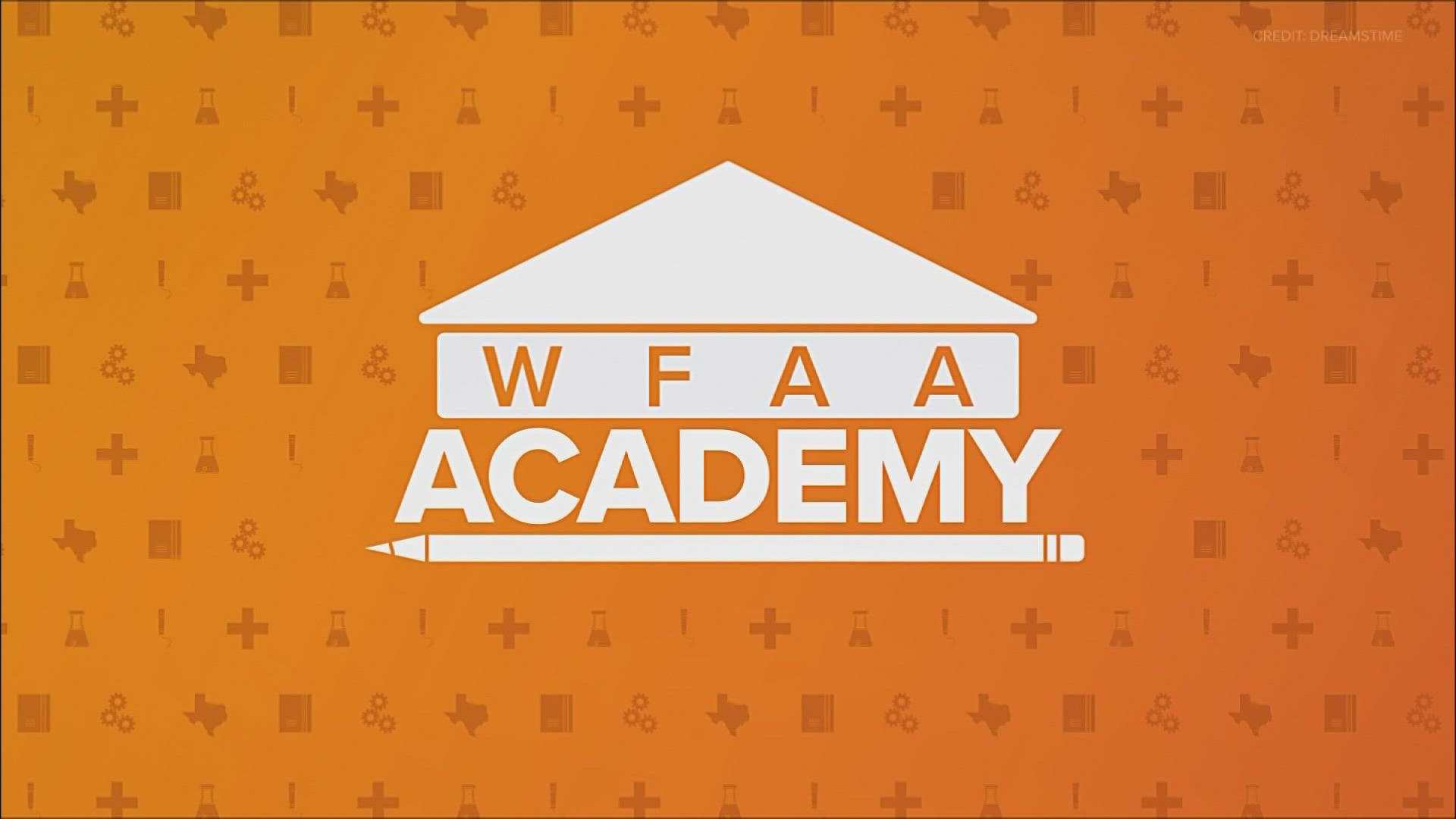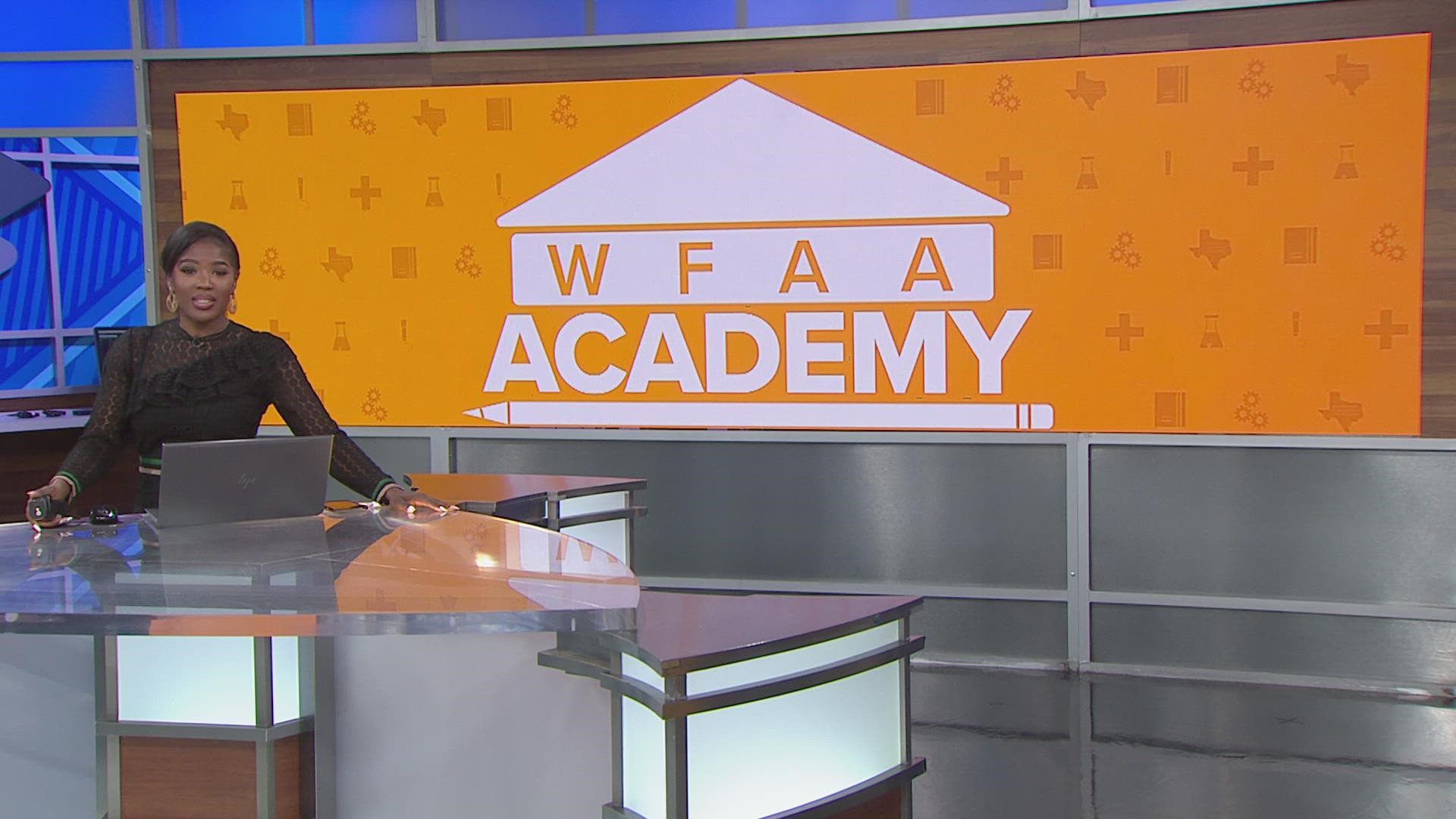DALLAS — Class soon will be back in session in school districts across North Texas.
While districts lay out plans for in-person learning, students making the transition from virtual classes may need special support from parents, according to Chappel Billings, a former teacher and school administrator who is the director of digital learning and technology innovation with Education Opens Doors.
Billings shared advice for parents and students making that transition during a recent segment on WFAA Academy.
What should parents of teen students expect during the transition back to in-person learning?
BILLINGS: Every child is different. Reflect on their use of coping skills and response to remote learning during the pandemic.
It may be a period of uncertainty as students navigate a learning environment, especially if they were fully virtual. Students are not only navigating new physical spaces, they are meeting new teachers, classmates and responding to new routines and expectations in a COVID-19 recovery environment.
Some students may experience a sense of anxiety. Establishing and reestablishing friendships may be important to them. Because some students may have experienced social isolation during the pandemic, those social connections or friendships were lost or never established during virtual learning.
Some students may also be concerned about their safety in this environment.
“Normalcy” is going to look different this year.
Students will have to process, and in some instances, come to terms with the fact that things are not as they remembered them to be.
Some students may also feel a sense of excitement. To return back to their physical school buildings, interact with their classmates, participate in extracurricular activities, etc.
As a parent, what can I do to better prepare my student for transitioning back to in-person school?
BILLINGS: We all have lived through and are still living through a pandemic. We learned a lot last year about the education system, access, student mental health and a number of other things, so I would say don’t let those learnings fall to the wayside.
Stay involved and connected with your children’s teachers. Regularly check-in with them to see how your child is doing.
Support your child as an individual based on what you learned through your virtual learning experience.
Provide mental health and wellbeing check-in chats.
Ask them questions about how they are feeling about the return to school.
Ask them what excites them and what concerns them.
Provide coping strategies for your child if they find themselves experiencing anxiety during the day.
Role-play social interactions like making new friends.
Continue to focus on safety measures.
Prepare them for the physical environment: Virtual school tours, maps and encouraging them to talk to classmates who may have already gone back to in-person learning.
Review the COVID-19 recovery policies in their districts with them so they can know what is expected of them.
Walk through their school schedules with them. They may look a bit different than what they are used to. The day will most likely be more structured. You can’t run to the fridge when you want a snack anymore.
How can I best support my student at home?
BILLINGS: Focus on checking in on your child, how they feel and how the transition is going.
Set at home schedules and/or routines.
Carve out time for homework.
Carve out “me” time for your child.
Balance at-home responsibilities with reacclimating back to school, whether that's extracurriculars, after-school tutoring, etc., with chores.
Keep a calendar, digital or printed, of important dates for each child.
What are the top 3 things parents can do to stay connected to their students and help them be successful knowing the learning landscape has changed?
BILLINGS:
- Talk to Your Child: Ask your child pointed questions about how they feel and how they are doing with the transition.
- Stay Connected with Teachers: Keep the lines of communication open. Ask the teacher about how your child is doing socially-emotionally and academically. Ask how you can support them at home.
- Maintain Positive Pandemic Behaviors: Challenge your student to think about what worked well for them during the pandemic and challenge them to figure out ways to potentially maintain some of the positive aspects. Try to ease into things instead of going from 0 to 100 (join 1 club/sport as you go back vs multiple, keep the tutor you had during the pandemic but go fewer times a week, etc.)


